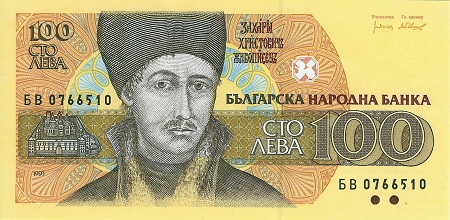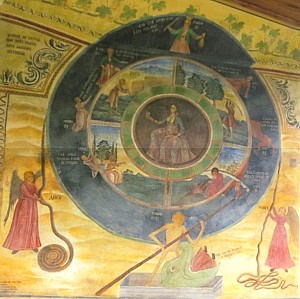BULGARIA
Zaharij Zagraf 1810-1853

Zahariy Dimitrov, also known as Zahari Zograf was born in 1810 in the town of Samokov into the family of Hristo Dimitrov, who had founded the Samokov Iconographic School. Due to the death of his father in 1819, Zahari was raised and taught to paint by his brother Dimitar, and the two worked together on several projects. By 1831 Zahari became an equal partner with his brother Dimitar in the family’s school.
In 1827 Zahari became a follower of Neofit Rilski, the 19th century Bulgarian monk who was also a teacher, artist and a figure in the Bulgarian National Revival, when the Bulgarian people achieved socio-economic development and national integration while under Ottoman rule.
Zahiry Zograf has been called the most famous painter of the Bulgarian Renaissance due to his magnificent paintings and icons found in many churches throughout the area. He incorporated aspects of everyday life of the common man in his works and is thus considered to be the founder of secular art in Bulgaria. He has many famous icons and frescos in several churches and monasteries throughout Bulgaria. In three monasteries in the towns of Rila, Bachkovo and Trovan, he included himself in the frescos.
In 1849 he began work on the Church of the Transfiguration of Our Lord, where he painted murals and icons. His most famous mural is painted on the outside of the church and is known as “The Wheel of Life”. Shortly after Zahari was brought in to paint the frescoes, he discovered that the monks were rather strict vegetarians. Zahari demanded that he be fed meat, and would not continue his work unless the monks served him meat with his meals. The monks soon accommodated him and the artist eventually finished his work in 1851.
This wheel depicted in this painting represents the stages of life in concentric rings, with the illustrations portraying the seasons of life. The outer ring shows the times of life at the ages of 4, 14, 21, 30, 48, 56 and 70 years old. This corresponds to the inner ring divided into the four seasons starting with spring at 4 years, then to summer at 21, autumn at 48, and winter at 70 where the figure of the Grim Reaper is waiting. Seated in the center of the circle is the figure of Fate.
The monastery that houses the “Wheel of life” was first built in 1360 but was destroyed by the Turks in the latter part of that century. It was rebuilt in 1860, and though many rockslides have destroyed adjacent buildings, the church remains standing.
After 156 years of being subjected to the weather, The ‘Wheel of Life” with other parts of the church underwent restoration in 2005-2006, bringing new details to light in the painting by removing old additions and returning missing pieces.
The Bulgarian 100 Leva banknote issued in the years 1991 and 1993 commemorated Zahari Zograf and his painting “The Wheel of Life”. The front of the note shows the artist while the back shows a depiction of the Wheel. However, the banknotes “Wheel of Life” is not in color, and does not show all images clearly. This is due in part to the cost of production and to security features incorporated into the banknote. The figure of the Grim Reaper for instance, can be found only on close inspection. The lines in the printing are offset slightly to give the Grim Reaper a subdued impression.


